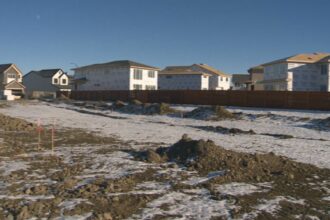The struggle for clean drinking water continues to plague Indigenous communities across Canada, as Assembly of First Nations National Chief Cindy Woodhouse Nepinak issued an urgent call to action yesterday during a press conference in Ottawa. Standing alongside Indigenous water advocates, Nepinak demanded the federal government resurrect and expedite clean water legislation that died when Parliament was dissolved in 2021.
“Every Canadian deserves access to clean drinking water—this is not a privilege, but a fundamental human right,” Nepinak declared, her voice resolute against the backdrop of mounting frustration among First Nations leaders. “While most Canadians take safe water for granted, thousands of Indigenous people still face daily uncertainty about whether their tap water is safe to drink.”
The urgency behind this renewed push stems from alarming statistics: despite the Liberal government’s promises to end all long-term drinking water advisories by March 2021, 28 communities across Canada still live under these conditions. Some First Nations have endured boil water advisories for over two decades, creating generations of residents who have never known what it means to simply turn on a tap for safe drinking water.
Indigenous Services Minister Patty Hajdu acknowledged the government’s failure to meet its self-imposed deadline, citing the complexity of water infrastructure projects in remote areas. “We remain committed to ensuring every First Nation has access to clean water,” Hajdu stated in a written response to questions from CO24. “The pandemic and supply chain issues have created unforeseen challenges, but this remains a top priority.”
The previously proposed legislation, which died on the order paper, would have established binding federal standards for water quality in Indigenous communities, created sustainable funding mechanisms, and established clear accountability measures. Water quality experts point out that similar frameworks exist for non-Indigenous municipalities across Canada, highlighting what many call a “two-tier system” of water governance.
“The statistical disparity is striking,” notes Dr. Miranda Thompson, water policy researcher at the University of Toronto. “Indigenous communities are 90 times more likely to lack access to safe drinking water compared to non-Indigenous communities in Canada. This represents not just a policy failure but a profound equity issue.”
Economic analyses suggest that resolving water issues in Indigenous communities would require approximately $4.7 billion in infrastructure investment, according to a 2023 Parliamentary Budget Office report. While substantial, advocates argue this figure represents less than 0.5% of the federal government’s annual budget.
The human impact of this crisis extends beyond immediate health concerns. “When children grow up never knowing what it’s like to drink safely from a tap, it affects their sense of dignity and place in Canadian society,” explained Elder Robert Beardy from Sachigo Lake First Nation, which has been under a boil water advisory for 15 years. “How do we talk about reconciliation when something as basic as water remains inaccessible?”
As pressure mounts on Parliament, the AFN is calling for multi-partisan support to fast-track new legislation that would not only address current advisories but create sustainable systems for maintaining water infrastructure. The proposed framework would include Indigenous-led water authorities and training programs to ensure local capacity for water system management.
As Canadians across the country contemplate this enduring crisis, a question remains: in a nation that possesses nearly 20% of the world’s freshwater resources, how have we failed to ensure this most basic necessity reaches all communities, and what does this persistent inequity reveal about our commitment to reconciliation?










